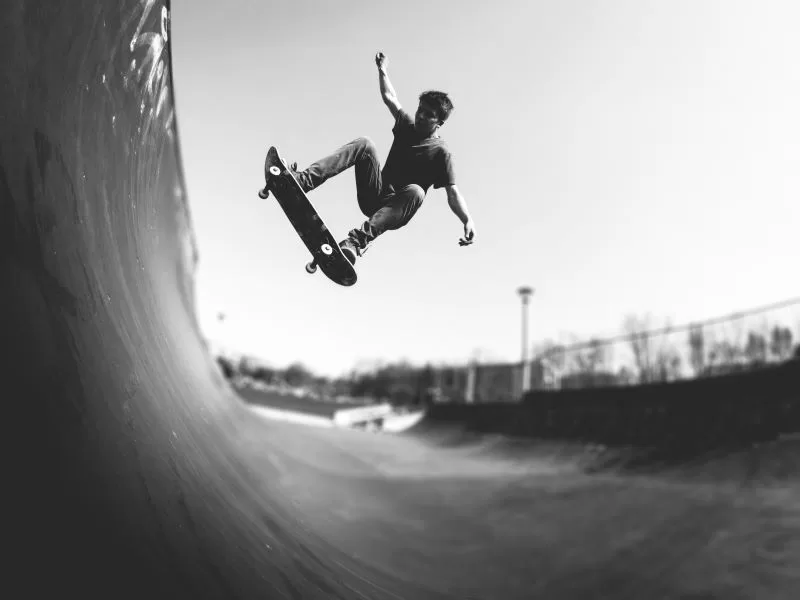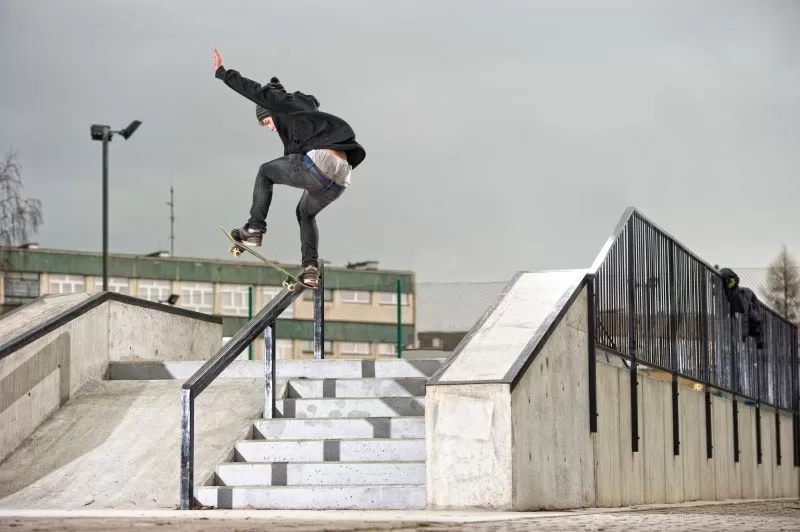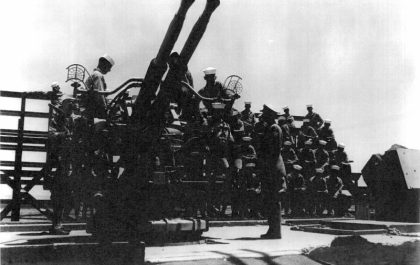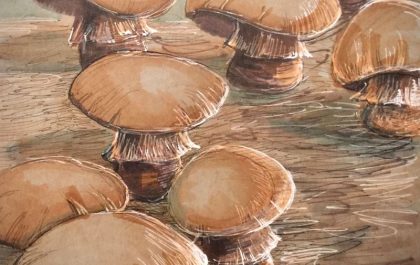
During Los Angeles’ record-breaking droughts of the mid-1970s, a group of teens from Santa Monica and Venice took their skateboards to the area’s empty pools, reservoirs, and drainage ditches and created not only a new sport but a cultural phenomenon. In this month’s column we take a look at the revolutionary Z-Boys and how they helped turn skateboarding into a global industry.
In the late 1950s and 1960s, skateboarding had had a fairly low profile and was primarily the domain of Southern California surfers looking for a hobby to pass time when the waves were flat.1 These early skateboards were rudimentary in design with clay wheels attached to simple wooden planks. Riding was both difficult and dangerous. While a small industry popped up around this first skating craze, the degree of difficulty in riding the boards meant the fad never quite took off on a national scale.2 But by the mid- 1970s, with the addition of a kicktail to maneuver the board’s direction and stronger, more reliable urethane wheels, the time was ripe for a new generation of thrill-seekers to take the humble skateboard to dizzying new heights.3
To local surfers in the 1970s, the areas between Santa Monica, Ocean Park and Venice beaches were collectively known as “Dogtown” and, unlike the more affluent surf beaches of Malibu and La Jolla, had a grittier element with rundown or boarded-up storefronts lining the shore.4 Central to Dogtown’s surf culture were the remains of Pacific Ocean Park pier, a nautical-themed amusement park jointly built by CBS and Santa Anita Park in 1958. It was permanently closed in 1967, after construction for a 1965 Santa Monica urban renewal project caused attendance at the park to plummet.5 However, the still standing 275-foot-long pier that extended out into the ocean created three distinct breaks for locals to surf.6 Among these surfers were teenagers Tony Alva, Stacey Peralta and Jay Adams who would go on to revolutionize the skateboarding scene.
The three boys were part of a junior surf team for the Jeff Ho Surfboards and Zephyr Productions surf shop that opened in Santa Monica in 1971.7 By 1974, the Zephyr Surf Team, or Z-Boys, with their aggressive style and youthful swagger, were dominating the surf breaks at the pier, as well as in local surf competitions. Like the surfers of the 1950s and ’60s, the Z-Boys also rode skateboards when they were on dry land. But this new generation had access to the improved boards that enabled them to use their experience of surfing to create new moves and spectacular tricks; riding the Dogtown concrete and pavement as though they were riding waves.
Although originally centered around the beach, the hunt for potential skating spots to hone their skills saw skaters fan out all over LA, including into three nearby schools, Kenter Canyon and Bellagio Road elementary schools and Paul Revere Junior High, whose playgrounds and asphalt banks provided plenty of opportunity to master new skating techniques.8 Paul Revere, in particular, became a popular spot with its hillside setting and sloping 15-foot-high retaining walls useful for perfecting the concrete wave riding style that would ultimately revolutionize the sport.9 “To a 12-year-old kid it was awesome,” Tony Alva recalled to Spin Magazine in 1999. “The asphalt had just been repaved, so the banks were really smooth and pristine—just these huge, glassy waves.”10
Soon a new opportunity to practice their moves appeared, when the group of skaters discovered the number of swimming pools that were sitting empty in wealthy enclaves like Brentwood, Malibu, and Bel Air. In the mid-1970s Los Angeles was experiencing one of its worst droughts on record and pools across the city were drained to conserve water. A recent fire that swept through the hills of Bel Air had also left abandoned pools among the charred remains of million-dollar homes11. As soon as the skaters discovered the potential for pools to take their tricks to a new level, the hunt for finding them began in earnest. Speaking to Spin Magazine, skater Stacy Peralta said, “Almost immediately after we discovered that you could skate these things, a network of kids developed. These kids would call up the shop and say, ‘Hey, we got a pool.’’12
With their new-found skills, the Zephyr Skate team made their first competition appearance in 1975 at the Bahne-Cadillac Skateboard Championship in Del Mar, California. This was the first competition to be held locally since the previous early 1960s skateboard craze, and more than 400 people attended.13 Immediately the team stood out from the rest, with their shabbier dress-style and streetwise attitude. “We were pretty hard-core when it came to anybody trying to compete with us,” Alva said. “We kind of psyched out everyone there before we even started skating against them.”14 Entering in the “Freestyle” division, the Zephyr team shocked the crowd with their aggressively low-slung, surfer style and inventive tricks. Compared to the Z-Boys their more traditional competitors seemed tentative and over-rehearsed.15 Zephyr’s Jay Adams and Tony Alva took out the third and fourth junior men’s freestyle division, while Peggy Oki, the team’s only female member, topped the women’s division.
The reaction to the Zephyr team’s performance in Del Mar was swift, with Adams, Alva and Peralta becoming overnight skating celebrities despite not winning their divisions.16 Suddenly this newer, untamed version of skateboarding took the world by storm. Skateboarder magazine, defunct since the end of the 1960s craze, was reissued in 197517 and declared that “Pool riding is the state-of-the-art skating style of the ’70s. No other type of riding offers such a radical departure from the past.” Dozens more magazines appeared and photographers like Glen E. Friedman and C.R. Stecyk, who were friends with the Z-Boys and had captured images of their wild days riding swimming pools and concrete drains, were published widely. By 1977 kids in their thousands were hopping on the trend and skateboarding was on its way to becoming a $400 million industry.
The Z-Boys, still in their teens, were signing lucrative sponsorship deals for clothing and skate equipment manufacturers.18 Peralta in particular was in high demand, with sponsors flying him around the world to promote the new skating style – even making a cameo appearance on Charlie’s Angels.19 “We were all middle and lower-class kids, and it wasn’t like we had a lot of opportunities,” Peralta recalled. “So, to be chosen to be a part of something like that was just the hottest thing that could happen to a kid in that area.”
By the late 1970s, and with many of their star skaters leaving for lucrative sponsorship deals or starting their own brands, the Zephyr shop and team disbanded. As the decade came to a close, and with the country slipping into a recession, sales of skateboards dropped dramatically and issues with liability insurance caused many skateparks to close.20 By the late 1980s, the reign of the Z-Boys was superseded by a new wave of professional skateboarders like Tony Hawk who took the stage in an increasingly commercialized industry.21
The Z-Boys and their ground-breaking contribution to skating reached a new global audience in 2001 with the release of the documentary Dogtown and Z-Boys, directed by Stacy Peralta, and its follow-up film, scripted by Peralta, The Lords of Dogtown in 2015.

Endnotes
1. https://www.liveabout.com/brief-history-of-skateboarding-3002042
2. https://www.liveabout.com/brief-history-of-skateboarding-3002042
3. Skateboarding: From Dogtown to the X-games by Tom Peacock
4. When Skating Shook the World by G. Beato
6. When Skating Shook the World by G. Beato
7. https://juicemagazine.com/home/dogtown-chronicles-nathan-pratt/
8. https://www.huckmag.com/article/glen-e-friedman-on-the-early-days-of-skateboarding
13. https://www.liveabout.com/the-true-story-of-dogtown-3002227
15. When Skating Shook the World
16.https://latetricks.com/bahne-cadillac-national-skateboard-championships-1975/
17. LA Times
18. When Skating Shook the World
19. Skateboarding: From Dogtown to the X-games by Tom Peacock



